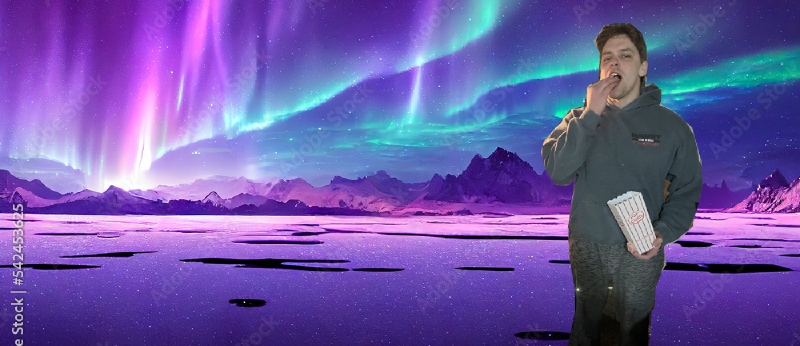I finally saw the Aurora with my own eyes. I had “seen” it once before in Bethel, Alaska but it was so faint that I doubted whether I was making it up. Back then my friend Rachel confirmed it was real the following day and she had heard others saying so too, so I had technically seen it back then. But this time, I saw it enough to know for sure that it was really happening and I was seeing it with my own eyes.
It was awesome. It looked like faint white lines bursting outward from the northern sky. And not always in the same direction. I didn’t see much color. The main thing I saw was lines of white that were able to be seen but not clearly focused on or directly carefully observed. They were just a bit too elusive for that. It reminded me of how one might see trees and mountains kind of generally shifting around while tripping but never being able to spot a specific individual movement.
I also learned, that night, something interesting about how modern people see the world through their (our) phones.
As Julie and I laid on our roof watching, we also took some pictures. We looked cute, the sky didn’t look like much. The camera couldn’t really see the white lines I saw. Then we decided to take a long exposure shot. It captured our faces much more clearly and resulted in a less grainy look in low light as you would expect. But the aurora in the background was something else! Blue, green, purple colors streaked like watercolors across the entire sky. It was also beautiful. And nothing like what we saw with our own eyes.
As a physicist and (wannabe) astronomer, I understand that you can learn a lot about the cosmos by taking images in different color bands. Or doing other cool tricks like different exposure time in different color bands. You can even see invisible-to-the-human-eye light by using a false color image that allows human brains’ image processing capabilities to gaze upon radio, microwave, or ultraviolet light. I support all of these techniques for better understanding our world.
The aurora photos our phone took could have been a green screen photo of us with an artificial intelligence generated aurora behind it. For all I know, maybe it was. (This thought is the inspiration for the blog’s cover image which I manually made with my own organic intelligence and GIMP.) I have also previously noticed that recent iphones automatically blur the age lines out of my forehead when taking my photo (without asking whether I want it or even mentioning that they are doing so). I’m confident that this aurora photo was more like a composite astronomy image than the age-line removal, but I don’t know for sure based on what I’ve experienced first hand.
What I do know for sure is that I have seen friends and acquaintances often show me aurora photos like the one we had just taken. They told me they saw the aurora and then showed me that photo. I’m now part of the club who knows that those photos are not real. That’s not what it looks like. At least not always.
I tried my best to enjoy the aurora show as I actually saw it. It really was awesome. I don’t need to show a photo of something different in hopes that my viewers will think it is cooler. In fact I won’t show a photo at all. I saw it with my own eyes and remember it with my own neurons. That is special.
As the show died down and we got tired and considered going to bed, we would sometimes use the long exposure photo as a way to tell whether the aurora was still happening. (Thinking that if it is still happening it could flare up to be visible again soon and we should stay out.) On the one had this feels like science. We are using an instrument to measure a phenomenon that our eyes can’t detect on their own. On the other hand it is another manifestation of the tragedy of the millennials. We see the world through our phones. We need our phones to tell us whether this is aurora. I worry that if I encountered a burning bush speaking to me, I might need to get pics or it didn’t happen.
Seeing the aurora is amazing. You should absolutely do it if you have the chance. It is actually the closest thing to a burning bush I’ve experienced. And part of what makes it special is that the phones, at least for now, can’t see it the way our eyes can. If you want to see the aurora, you have to actually go see the aurora. And that is really special.
